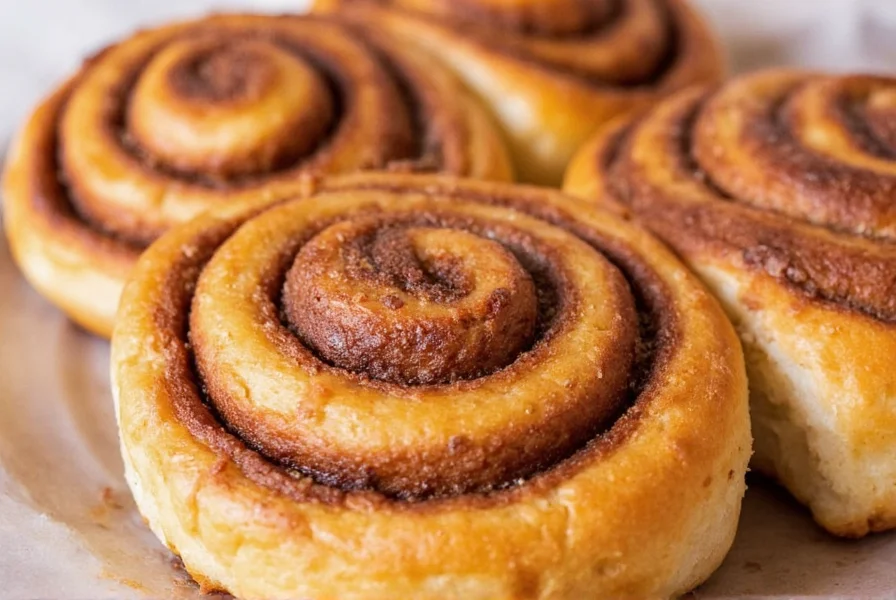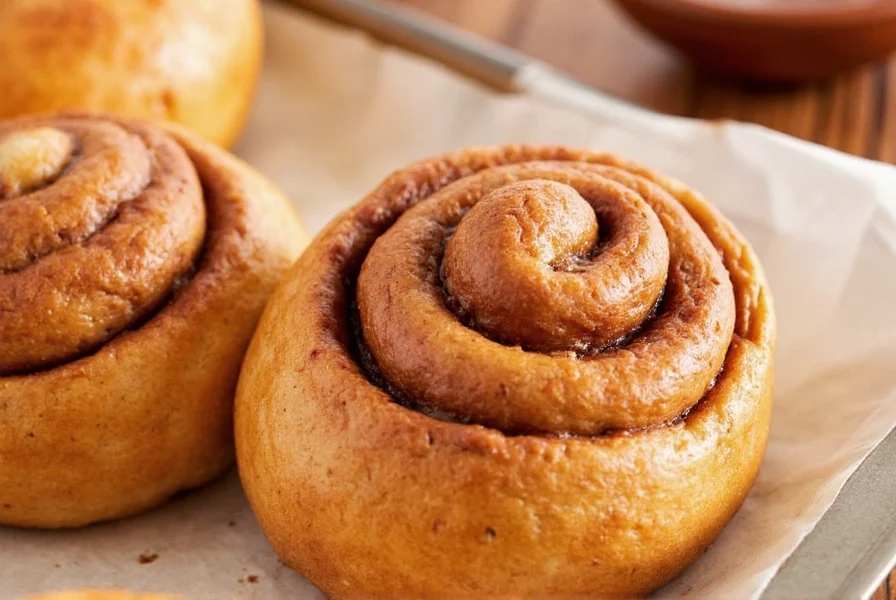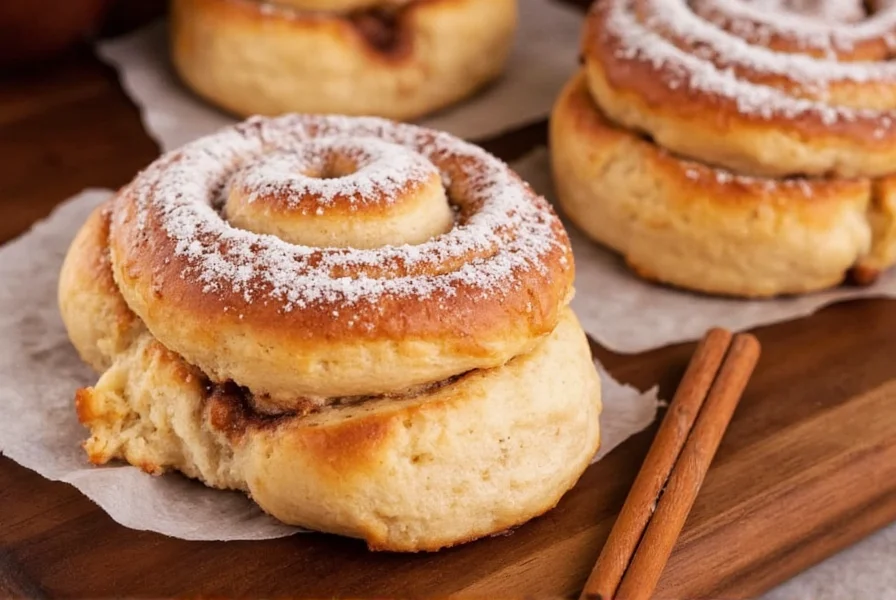When searching for texas cinnamon bun information, many expect a uniquely Texan pastry tradition. While Texas doesn't have an officially designated cinnamon bun style recognized by culinary historians, the state's bakeries have developed distinctive approaches to this beloved treat that reflect local tastes and ingredients.
Understanding Texas Cinnamon Bun Traditions
The concept of a "Texas cinnamon bun" primarily represents how Texan bakers and consumers have adapted the classic cinnamon roll to suit regional preferences. Unlike distinctly regional pastries like New York cheesecake or Boston cream pie, Texas cinnamon buns don't follow a single standardized recipe. Instead, they showcase the state's culinary creativity through several common characteristics:
- Generous portions - True to Texas spirit, many bakeries serve oversized cinnamon buns, sometimes twice the size of standard versions
- Pecan incorporation - Texas pecans frequently appear as toppings or mixed into the filling
- Subtle spice variations - Some recipes include a hint of cayenne or other spices reflecting Texan flavor preferences
- Local ingredient emphasis - Use of Texas honey, locally milled flours, or regional dairy products
| Characteristic | Texas Variation | Traditional Version |
|---|---|---|
| Size | Often 4-6 inches in diameter | Typically 2-3 inches in diameter |
| Key Additions | Pecans, local honey, subtle spice | Basic cinnamon-sugar filling |
| Frosting Style | Cream cheese or brown sugar glaze | Simpler powdered sugar icing |
| Regional Significance | Reflects "everything's bigger" culture | No specific regional association |
Historical Context of Cinnamon Buns in Texas
Cinnamon buns arrived in Texas through German and Scandinavian immigrants who settled in the state during the 19th century. These communities brought their baking traditions, including various rolled pastry recipes. Over time, these recipes merged with local ingredients and preferences.
While researching authentic texas cinnamon bun recipe variations, food historians note that Texas bakeries began adapting these recipes in the early 20th century. The state's abundant pecan production (Texas is the second-largest pecan producer in the U.S.) naturally led to incorporating this local nut into traditional pastries.

What Makes a Cinnamon Bun "Texan"?
When evaluating what makes a cinnamon bun texan, consider these defining elements that distinguish Texas-style versions from standard recipes:
Size Matters
True to the state motto "everything's bigger in Texas," many bakeries create substantially larger cinnamon buns. This isn't just marketing—it reflects Texan portion preferences. Some establishments even offer "Texas-sized" versions weighing 8-12 ounces, compared to the standard 3-4 ounce cinnamon roll.
Local Ingredient Integration
The most authentic Texas cinnamon buns incorporate regional ingredients:
- Texas pecans - Often toasted and sprinkled on top or mixed into the filling
- Local honey - Used in glazes instead of traditional powdered sugar icing
- Regional dairy - Many recipes specify Texas-produced butter and cream cheese
Subtle Flavor Adaptations
Some Texas bakeries add distinctive touches that reflect local palates:
- A pinch of sea salt to balance sweetness
- Hint of cayenne or chipotle for "Texas heat"
- Bourbon-infused glazes (using Texas-distilled spirits)
- Local wildflower honey in place of standard sweeteners
Finding Authentic Texas Cinnamon Buns
For those searching where to find cinnamon buns in texas, several regions have developed notable reputations:
- Central Texas - Known for German-influenced bakeries in towns like Fredericksburg and New Braunfels
- Dallas-Fort Worth - Features innovative takes at establishments like Pecan Lodge and Bread Winners Cafe
- Houston - Blends diverse cultural influences into cinnamon bun creations
- Austin - Home to craft bakeries emphasizing local ingredients
When seeking best texas style cinnamon roll ingredients, look for bakeries that highlight local sourcing and traditional techniques with Texan twists.

Texas-Style Cinnamon Bun Recipe
Creating authentic texas style cinnamon roll recipe at home involves adapting traditional methods with regional touches. Here's a simplified version that captures the Texas essence:
Ingredients
- 4 cups all-purpose flour
- 1/4 cup granulated sugar
- 2 1/4 tsp active dry yeast
- 1/2 cup warm milk
- 1/4 cup Texas honey or local honey
- 1/2 cup unsalted butter, softened
- 2 large eggs
- 1 tsp salt
Filling
- 1/2 cup packed brown sugar
- 3 tbsp ground cinnamon
- 1/2 cup toasted Texas pecans, finely chopped
- 1/4 cup melted butter
Glaze
- 4 oz cream cheese, softened
- 1/4 cup Texas honey
- 1/2 cup powdered sugar
- 2 tbsp heavy cream
- 1/4 tsp vanilla extract
Instructions
- Mix yeast with warm milk and 1 tsp sugar; let sit until foamy (5-10 minutes)
- Combine flour, remaining sugar, eggs, melted butter, salt, and yeast mixture in stand mixer
- Knead until smooth and elastic (about 8 minutes)
- Let rise in greased bowl until doubled (1-1.5 hours)
- Roll dough into 18x12 inch rectangle
- Spread melted butter over dough, then sprinkle cinnamon-sugar mixture and pecans
- Roll tightly from long side, pinch seam to seal
- Cut into 1.5-inch slices and place in greased baking dish
- Let rise until puffy (30-45 minutes)
- Bake at 375°F for 20-25 minutes until golden
- Mix glaze ingredients and drizzle over warm buns
Cultural Significance in Texas
While not an officially designated state pastry, cinnamon buns have become woven into Texas food culture. Many family-owned bakeries have served their signature versions for generations, creating local traditions. The adaptation of this immigrant-origin pastry reflects Texas's culinary evolution—honoring tradition while incorporating local flavors and preferences.
Understanding texas cinnamon bun history reveals how food traditions evolve through cultural exchange and regional adaptation. What began as European immigrant recipes has transformed into something distinctly Texan through size, ingredient choices, and preparation methods that reflect the state's identity.
FAQ
Are Texas cinnamon buns different from regular cinnamon rolls?
Texas cinnamon buns typically follow standard cinnamon roll recipes but often feature larger portions (reflecting Texas's 'everything's bigger' culture) and may incorporate local ingredients like Texas pecans. Some variations include subtle spice additions or regional sweeteners like Texas honey, but there's no single standardized 'Texas style' recognized by culinary authorities.
What makes a cinnamon bun authentically Texan?
An authentic Texas cinnamon bun typically features larger portions than standard versions, often incorporates Texas pecans in the filling or topping, and may use local ingredients like Texas honey or dairy. Some bakeries add subtle regional touches like a hint of spice reflecting Texan flavor preferences, but the core recipe remains similar to traditional cinnamon rolls.
Where can I find the best Texas-style cinnamon buns?
The best Texas-style cinnamon buns can be found at family-owned bakeries across the state, particularly in Central Texas towns with German heritage like Fredericksburg and New Braunfels. Notable establishments include Pecan Lodge in Dallas, Bread Winners Cafe in the DFW area, and various craft bakeries in Austin that emphasize local ingredients in their cinnamon bun recipes.
Do Texas cinnamon buns contain unique ingredients not found in regular versions?
Texas cinnamon buns often include Texas pecans as a distinctive ingredient not typically found in standard cinnamon rolls. Some variations incorporate Texas honey instead of traditional sweeteners, local dairy products, or subtle spice additions like a pinch of cayenne. However, the base recipe remains similar to traditional cinnamon buns, with these regional ingredients serving as distinctive touches rather than fundamental changes.
Is there a historical origin for Texas cinnamon buns?
Texas cinnamon buns evolved from German and Scandinavian baking traditions brought by 19th century immigrants. These communities established bakeries that adapted traditional rolled pastry recipes using locally available ingredients, particularly Texas pecans. While there's no single documented origin point, the evolution reflects how immigrant food traditions merged with Texas's agricultural resources and cultural preferences over time.











 浙公网安备
33010002000092号
浙公网安备
33010002000092号 浙B2-20120091-4
浙B2-20120091-4